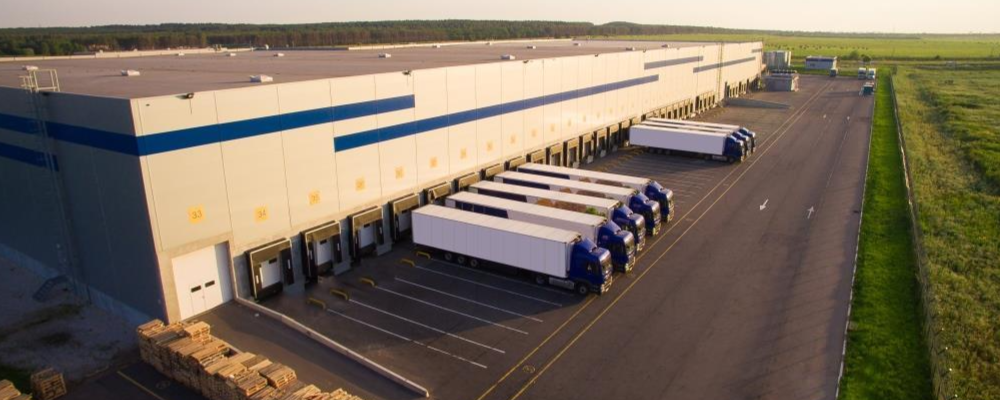With numerous complexities, high costs and even higher expectations, transportation management can be a bumpy ride. The additional volatility in uncertain times like these makes the job even more challenging. Here are three ways to make things easier.
In large organisations, transportation typically accounts for 40-60% of supply chain costs.
It’s an area where properly implemented efficiencies can make a huge difference to the bottom line – but not always one where those efficiencies are easy to identify or apply.
That’s because today’s transportation managers face an array of challenges. They have to operate in complex and often volatile global logistics landscapes, rely on disparate sources of data from logistics service providers (LSPs), and deal with carriers that provide different levels of service with different cost structures.
And, in the face of this, demands on managers are ever-increasing – as recently exemplified by the COVID-19 generated disruptions across global supply and demand chains. They’re expected to meet exacting savings targets, improve customer centricity, and quickly scale operations to new markets.
In this environment, a good data strategy can be vital in providing a single version of the truth and enabling informed decision-making. But investing in analytics technology and gathering data is only half the battle. The first and most important step is knowing where you should focus those investments.
With that in mind, here are three great places to start.

1. Carrier identification and selection
Frequent reviews of your carrier base are an essential part of meeting savings targets and ensuring quality of service.
Your goal should be to identify a group of carriers that provide the perfect balance of low costs and timely delivery. But, when it comes to transportation procurement, there’s a lot to consider, from keeping the number of carriers manageable to ensuring the reliability of services across different markets and geographies.
A good data management and analytics strategy will help you to gain a complete and consistent view of every carrier tendering its services, so you can benchmark rates and make faster, better decisions about the companies transporting your goods.
For this to work you need to establish a set of consistent templates, data integration and reporting frameworks, and best practices, to ensure you have the same vital information about every carrier.
Once you have the data and processes in place, analytics can help you effectively monitor spend, run more tenders at the same time, optimise carrier selection and costs, and bring new levels of efficiency to your operations.
2. Ongoing performance analysis
Like every other part of your transportation strategy, selecting carriers shouldn’t be a once-and-done affair – it is one step in the broader process that should recur. To maximise returns, your options and their impacts must be constantly under review.
That’s why the next step is to ensure you have the visibility, reliability and traceability needed to monitor performance, identify inefficiencies, and aid future negotiations.
A good analytics partner will help you analyse your internal shipment data to gain these insights. But a really good partner will also bring external data into the mix – including existing industry knowledge and performance data extracted from carrier websites or other sector-specific intelligence sources. This can then be used to create a database from which to benchmark industry offerings.
With this level of insight it becomes easier to manage costs and performance, identify new distribution opportunities, and ensure your transportation processes continue to operate optimally.
3. Route and network optimisation
With warehouses and distribution centres scattered over various geographies – and evolving due to shifting supply chains – optimising delivery networks is both essential and extremely difficult. This becomes even more complicated during times of authority-imposed transport restrictions.
With access to advanced analytics and algorithms, you can incorporate requirements and restrictions into models that determine the best configuration for your distribution network – and take advantage of its untapped potential.
For instance, by collating information like average cost per mile and warehousing and fulfilment costs, simulation technologies can help you predict how your distribution network will perform in different scenarios.
Will costs or time-to-serve improve or suffer if you adopt a centralised, single-warehouse approach? And what will the effect of satellite distribution centres be?
The ability to see the impacts of these scenarios without having to physically change anything provides a risk-free way to experiment with your distribution model.
The right data science solution can also help you plan the best routes for your carriers to take, using geocoding information from Google Maps and similar sources.
The end results are lower costs and better performance across the network.
Take transportation insights into the fast lane
With the right know-how, data science can help you improve collaboration with LSPs and carriers, gain deeper insights from your transportation data, optimise decision-making, and ensure continuous improvement and innovation across the organisation.
The only question is, where does that know-how come from?
The Smart Cube supports transportation and logistics teams in large organisations with custom solutions, expertise and capabilities that drive tangible benefits, including:
- Reduction in transportation costs by up to 15%
- Increase in tender throughput by 100%
- Improvement in on-time-delivery performance by up to 5%
- Decrease in analytics costs by more than 50%
Find out more about how our Transportation Analytics solution helps companies move goods faster, more intelligently and at an optimised cost, by gaining visibility and insights into their transportation operations.



